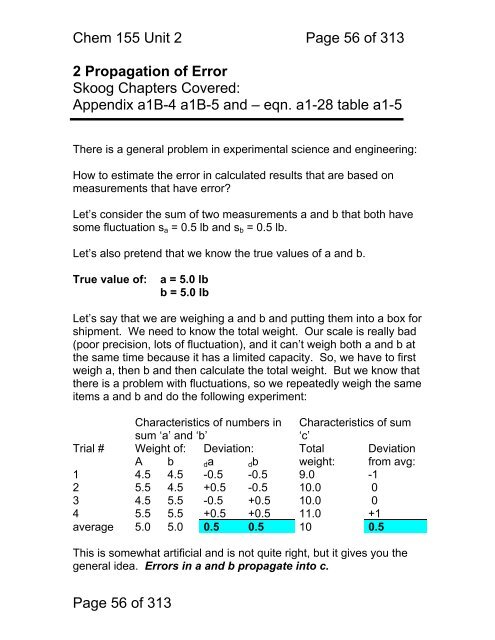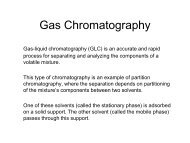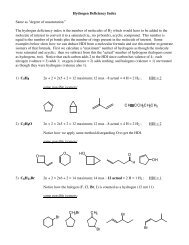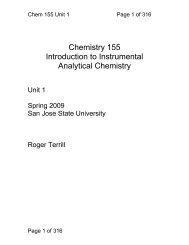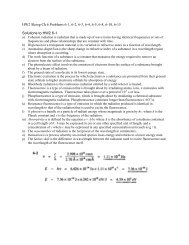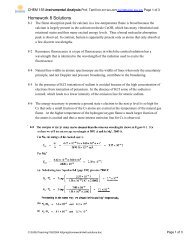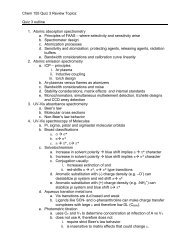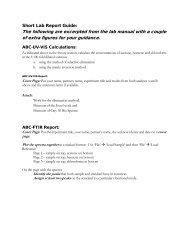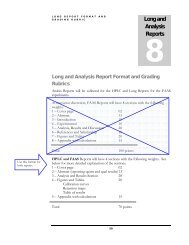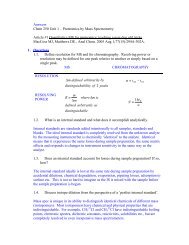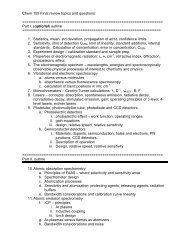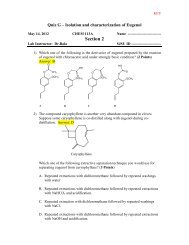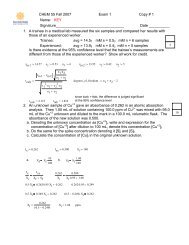Chemistry 155 Introduction to Instrumental Analytical Chemistry
Chemistry 155 Introduction to Instrumental Analytical Chemistry
Chemistry 155 Introduction to Instrumental Analytical Chemistry
Create successful ePaper yourself
Turn your PDF publications into a flip-book with our unique Google optimized e-Paper software.
Chem <strong>155</strong> Unit 2 Page 56 of 3132 Propagation of ErrorSkoog Chapters Covered:Appendix a1B-4 a1B-5 and – eqn. a1-28 table a1-5There is a general problem in experimental science and engineering:How <strong>to</strong> estimate the error in calculated results that are based onmeasurements that have error?Let’s consider the sum of two measurements a and b that both havesome fluctuation s a = 0.5 lb and s b = 0.5 lb.Let’s also pretend that we know the true values of a and b.True value of:a = 5.0 lbb = 5.0 lbLet’s say that we are weighing a and b and putting them in<strong>to</strong> a box forshipment. We need <strong>to</strong> know the <strong>to</strong>tal weight. Our scale is really bad(poor precision, lots of fluctuation), and it can’t weigh both a and b atthe same time because it has a limited capacity. So, we have <strong>to</strong> firstweigh a, then b and then calculate the <strong>to</strong>tal weight. But we know thatthere is a problem with fluctuations, so we repeatedly weigh the sameitems a and b and do the following experiment:Characteristics of numbers insum ‘a’ and ‘b’Characteristics of sum‘c’Trial # Weight of: Deviation: Total DeviationA b da db weight: from avg:1 4.5 4.5 -0.5 -0.5 9.0 -12 5.5 4.5 +0.5 -0.5 10.0 03 4.5 5.5 -0.5 +0.5 10.0 04 5.5 5.5 +0.5 +0.5 11.0 +1average 5.0 5.0 0.5 0.5 10 0.5This is somewhat artificial and is not quite right, but it gives you thegeneral idea. Errors in a and b propagate in<strong>to</strong> c.Page 56 of 313


